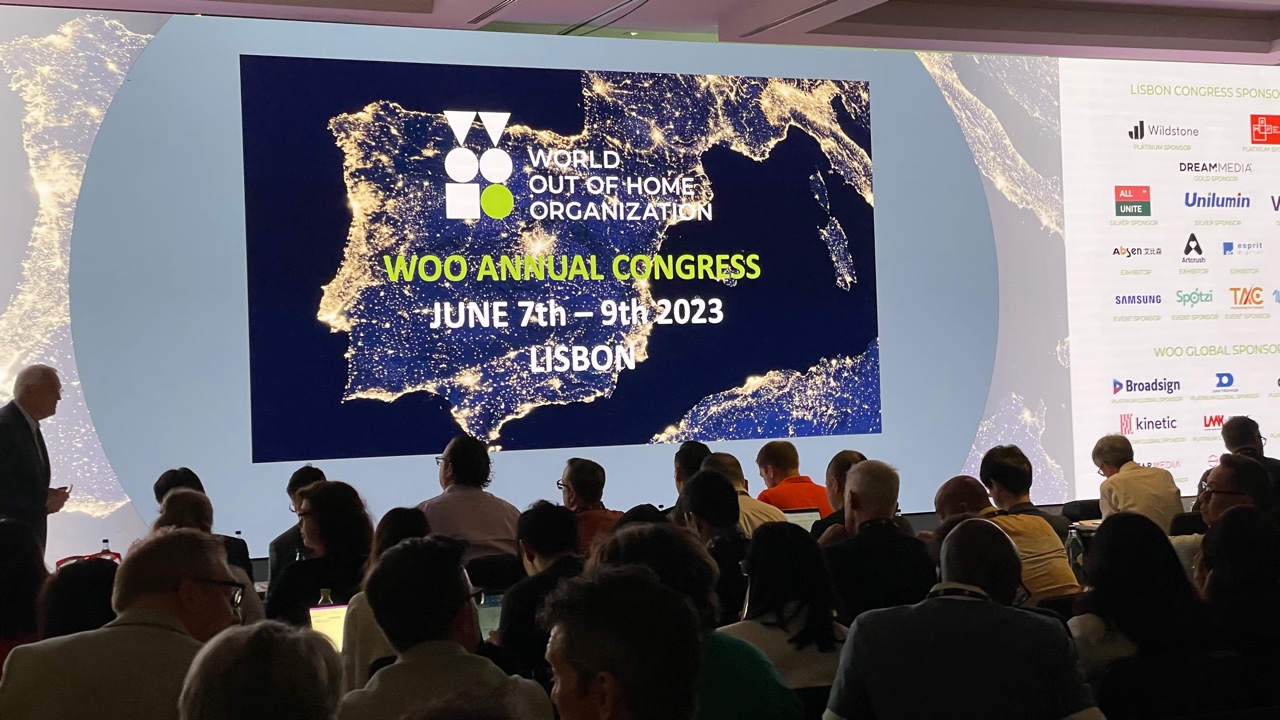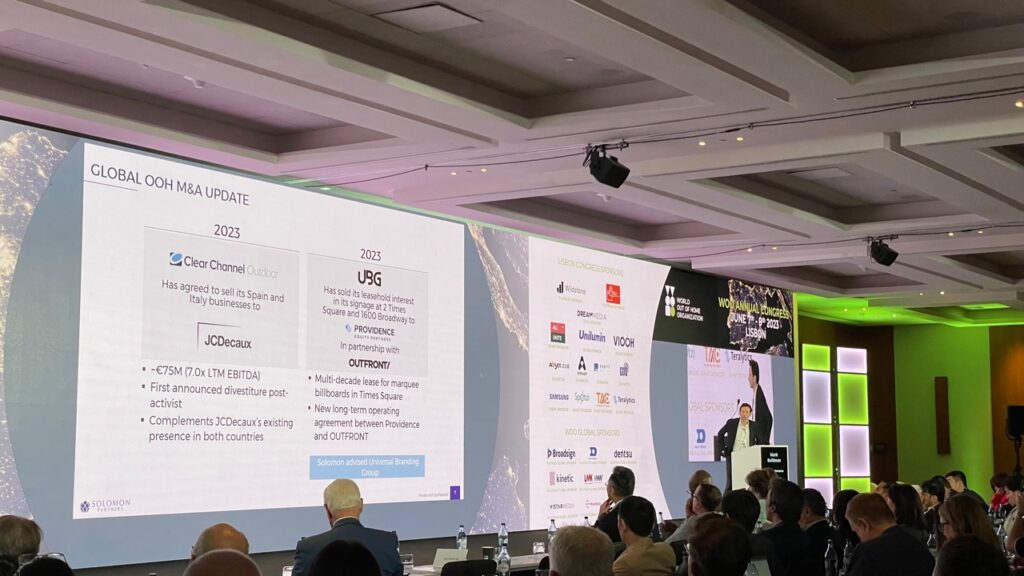Rebuilding Momentum: Groundbreaking Directions for Out-of-Home Advertising. A Report from the WOOHO Congress in Lisbon.
Opening the annual World Out of Home Organization (WOOHO) congress, which this year took place in beautiful Lisbon, the organization's chairman, Tom Goddard, presented the main directions of the organization's activities aimed at rebuilding and increasing the importance of OOH (Out of Home) advertising in the global media market. Global OOH advertising expenditures account for approximately 5% of total media spending. The industry predicts that with the development of Digital OOH advertising, it will move beyond the “five percent syndrome”.

Tom Goddard defined several key areas on which the industry should focus to improve growth momentum. These include: focusing on performance measurement, sustainable development, technology development, best practices, and cooperation among regional industry organizations. According to Tom Goddard, what hinders the industry's share growth in the advertising pie is a lack of consolidation, rapid development of advertising technologies alternative to OOH, and a lack of industry standards and audience measurements.
However, if the industry manages to overcome these obstacles, we can expect significant growth. This is demonstrated by the situation in the most developed markets, where OOH's share in media communication is approaching 10%. Tom Goddard called on the congress participants in Lisbon to make this growth our global goal for 2028.
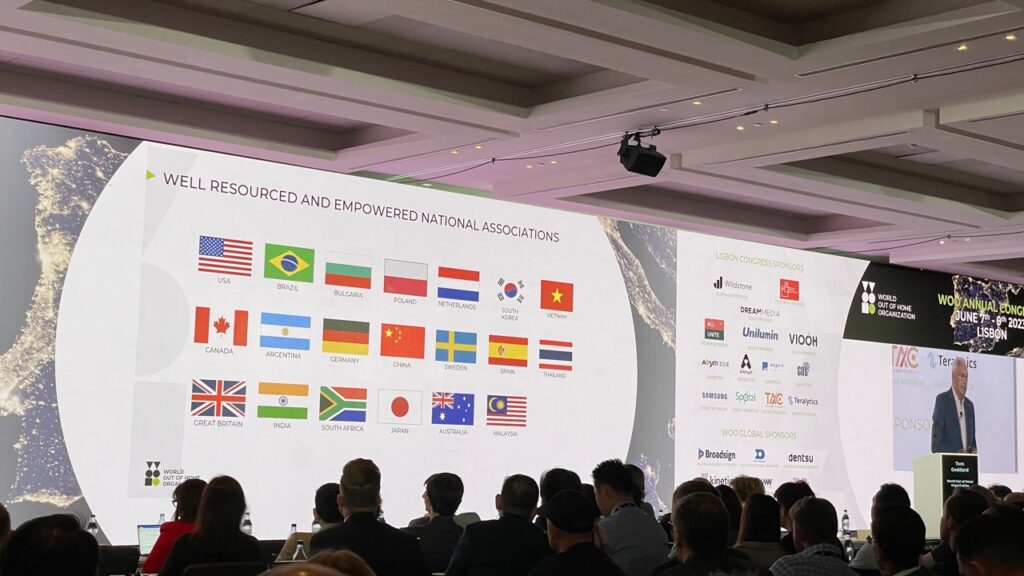
Out-of-Home Advertising in Germany
The next speaker was Christian Schmalzl, CEO of the out-of-home advertising company Stroer. Christian presented the dynamics of the German advertising market over the past 12 months. Overall, the entire advertising market there saw a revenue decrease of approximately 7%, but global platforms such as Google, YouTube, Instagram, and Snapchat recorded an increase of approximately 3%. Traditional out-of-home advertising did not undergo major changes, while Digital OOH advertising grew by approximately 27%.
Stroer is expanding its portfolio of DOOH formats. Hamburg was cited as an example, where in 2022 the company installed 200 digital advertising pillars. This increased the total number of digital media in that city to over 5000. The presenter showed various types of DOOH media, such as screens on streets and sidewalks in city centers, at public transport stops, in shopping centers, in office building elevators, restaurants, and bars. Different types of screens aim to reach various audience groups in different locations and at different times of the day.
Christian Schmalzl also discussed the development of programmatic campaign buying systems and audience targeting capabilities. This is possible when planning advertising campaigns through all relevant DSP (Demand-Side Platform) platforms. Audience targeting is based on demographic data, behaviors, and preferences, as well as target groups defined by clients. An important aspect he highlighted is data security. Data is anonymized, and access to it occurs in accordance with data protection regulations.
Programmatic in Spain and Italy
The next presentation was given by Alexandre Roubaud from the out-of-home advertising company JCDecaux. He presented the situation in the Southern European markets, with a particular focus on Spain and Italy. In Spain, JCDecaux recently finalized the acquisition of media from Clear Channel Outdoor. There is growth potential for data-driven and programmatic out-of-home advertising there. In 2022, 9.4% of campaign sales on JCDecaux Spain's DOOH media already came from programmatic ad buying, compared to 5.8% for the entire JCDecaux group. In Italy, the out-of-home advertising market is very competitive, but programmatic is developing dynamically, and in 2022 it already accounted for 13.2% of JCDecaux Italy's DOOH sales. The company expects programmatic sales to grow to 20-30% of total DOOH advertising expenditures by 2025.
JCDecaux defines itself as a pioneer in digital transformation. Data is crucial for valuable brand communication, and programmatic advertising is a huge opportunity for the industry to increase its share in the media pie. The company owns and develops its own technological platforms: VIOOH and Displayce. JCDecaux has adopted an ambitious ESG (Environmental – Social - Governance) roadmap for 2020-2030, encompassing actions for more sustainable public spaces, minimizing environmental impact, and responsible business conduct, including aspects related to employment and personal data management.
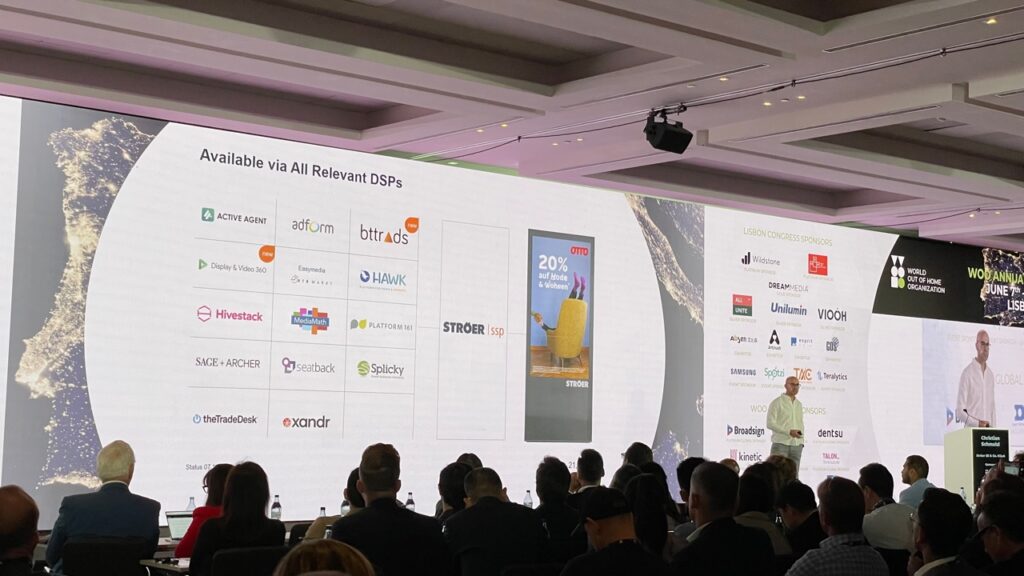
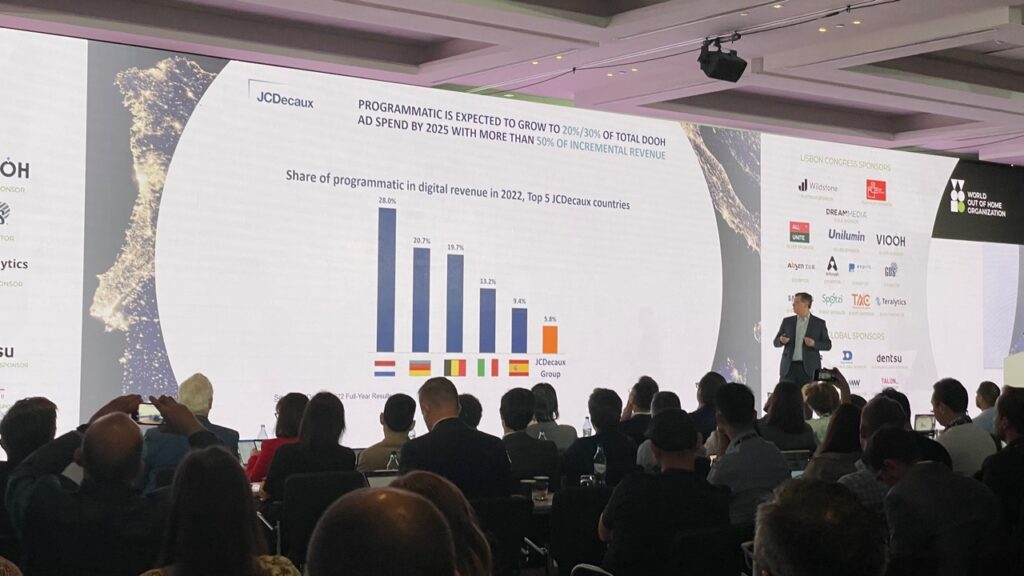
Digitalization in Brazil and Ovations for Ukraine
The next speaker at the congress was Felipe Forjaz, chairman of the Brazilian out-of-home advertising industry organization Abooh Brazil. In this country, too, the digitalization of out-of-home advertising media is progressing rapidly. In 2019, programmatic purchases accounted for only 2.3% of total OOH expenditures, and it is projected that they will reach 8.7% in 2023.
The situation on the Ukrainian market was presented by Victor Ivanchenko from the Ukrainian outdoor company Prime. Despite Russia's full-scale invasion of Ukraine, Prime company showed resilience and survived difficult conditions. Despite significant declines in the advertising market in 2022, the company achieved good sales results and continued its operations. This is proof that Ukraine is not only fighting but also rebuilding despite the ongoing invasion.
Victor's presentation concluded with a standing ovation.
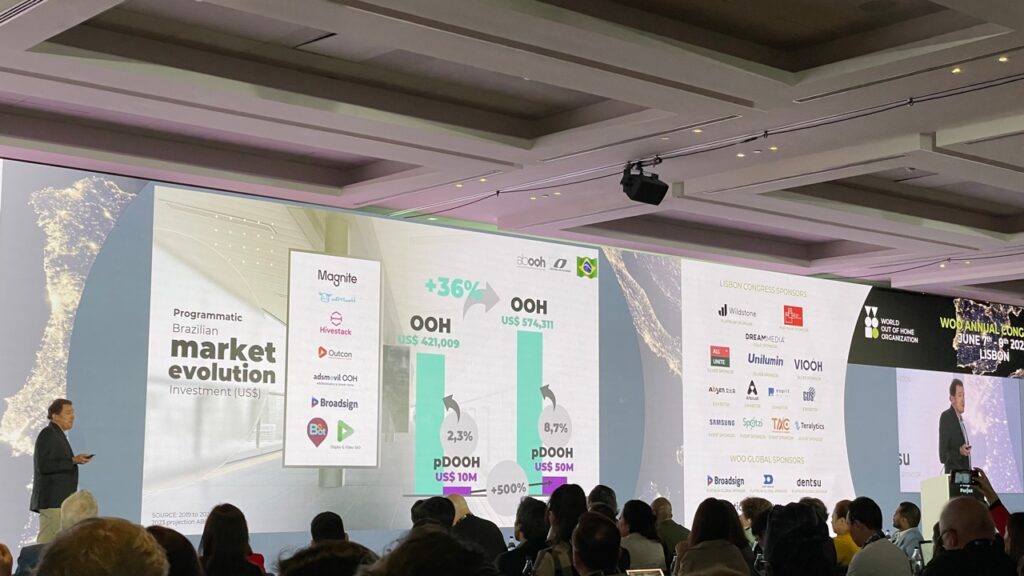
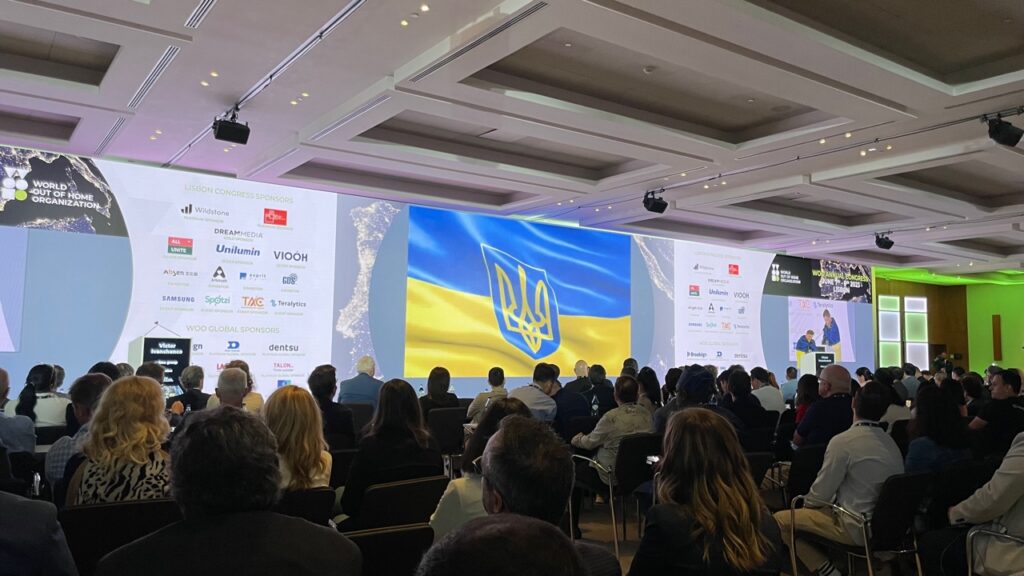 Out of Home - a Safe and Trustworthy Medium
Out of Home - a Safe and Trustworthy Medium
The first day of the congress concluded with a presentation by Mark Boidman from the investment bank Solomon Partners. He specializes in M&A transactions for media companies. Boidman emphasized that the global out-of-home advertising market is growing and is resilient to macroeconomic factors. Out-of-home advertising is gaining market share at the expense of other advertising channels, especially in the face of changing consumer behavior. This is because it is considered a trustworthy and safe medium by consumers, particularly in the context of increasing disinformation and deepfakes. Marketers also value the wide reach and visibility of out-of-home advertisements, and one of the fastest-growing segments of the OOH market is the retail sector. It is believed that the use of new technologies will revolutionize the industry even further. Indeed, it is predicted that the global artificial intelligence market in advertising will reach a value of 10 billion dollars by 2027.
Keywords: Innovation, Sustainable Development, Research, Cooperation
The conclusions from the first day of the WOOHO congress are clear. Out-of-home advertising has great growth potential and is a reliable communication channel that attracts consumer attention. The industry should focus on technological innovations, sustainable development, performance measurement, and cooperation among industry organizations to achieve a larger share in the advertising market.
The examples of success presented at the congress in various countries and regions worldwide show that DOOH has the potential for further growth and an increased role in advertising strategies. Will the forecasts regarding the growth of OOH advertising's share to 10% by 2028 come true? That depends on the actions taken by the out-of-home advertising industry and evolving trends and technologies. One thing is certain - the OOH advertising industry faces challenges, but also immense opportunities.


